This is the ultimate artisan bread. The crust is crunchy and the chewy center is filled with big pools of dark chocolate.
For my birthday this year, my mother-in-law sent us the most delicious chocolate sourdough yeast bread from Zingerman’s in Ann Arbor. In the past, she’s spoiled us with their artisan cheese clubs and the most buttery morsels of pecan shell smoked salmon from Tracklements. She knows the secret to our hearts!
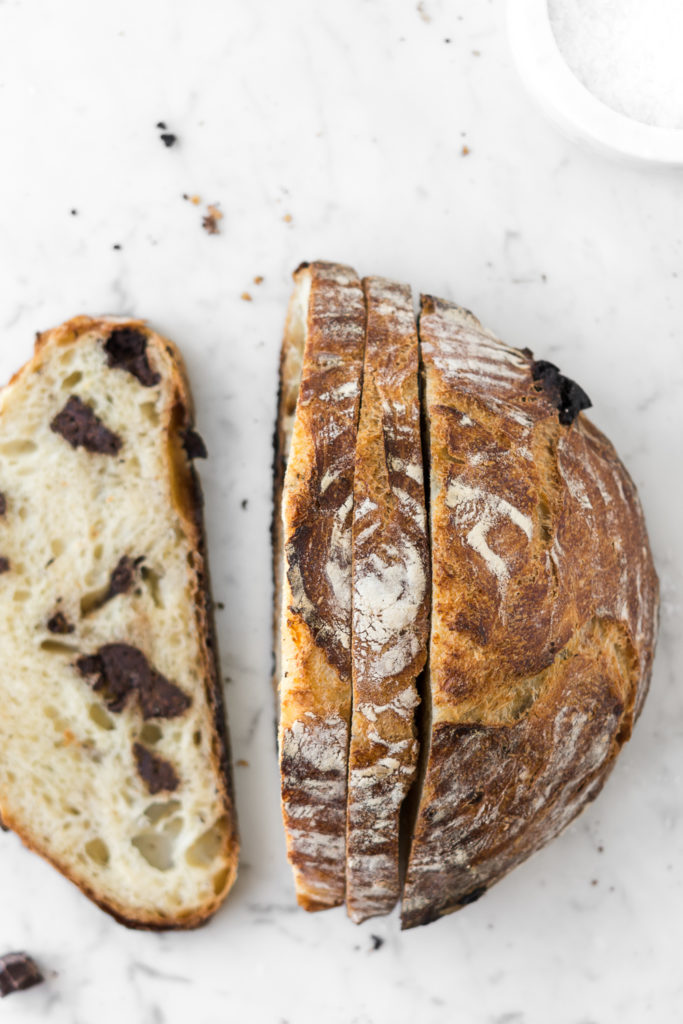
The bread was life changing. Crusty, chewy, and speckled with dark Belgian chocolate-- I ate half the loaf before my husband even came home. I’ve been set on recreating it ever since.
This recipe is my version of that bread. I didn’t go the sourdough route, because I just don’t bake enough bread for it to make sense to maintain a starter. But I did find a phenomenal technique for making artisan quality yeast bread at home, courtesy of Ken Forkish, author of Flour Water Salt Yeast.
The crust is crunchy and shattery, the center is chewy and filled with big melted pools of dark chocolate. It’s a heady combination of textures that’s usually reserved for artisan bakeries and long lines— not the comfort of your own kitchen.
Once you make this artisan bread, you’ll never worry about that bakery selling out of your favorite loaf. You have the power to make it yourself! And the next day, I always toast it, slather it with butter and sprinkle big flakes of salt over it (Maldon is my favorite) for the most decadent breakfast you’ve ever had.
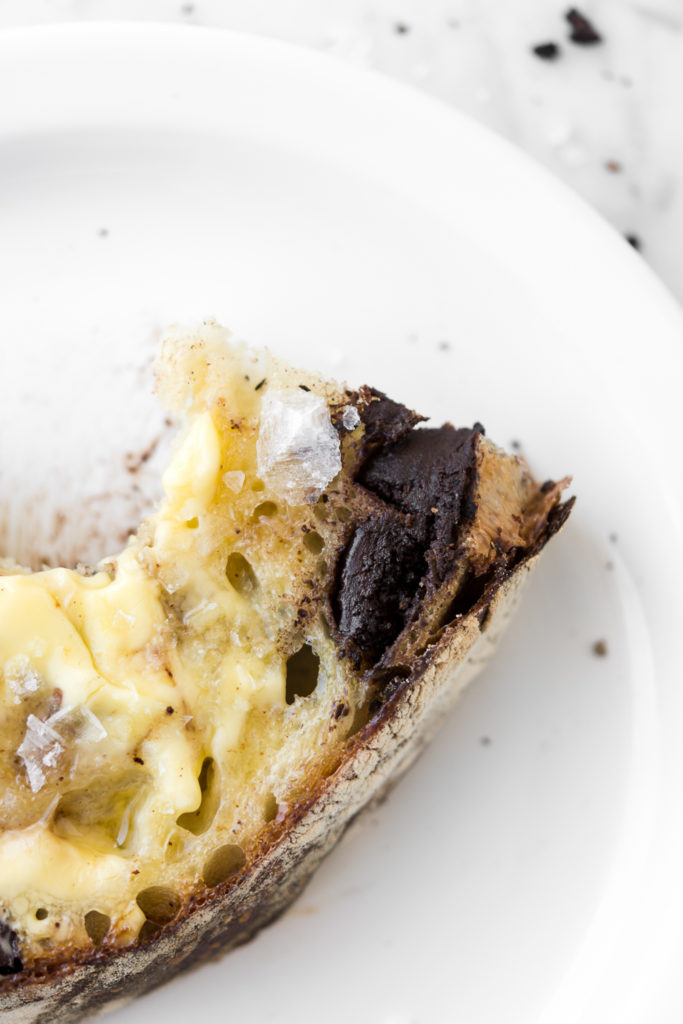
The recipe below may seem a little overwhelming, but once you read through the steps it’s not so bad. I’ve skipped a lot of the nuances here for bread baking that Ken dives deeply into in his book.
The process I’ve laid out works, but if you really want to understand and fine tune your methods then I suggest checking out his book. It explains the role of preferments and the importance of time and temperature to develop flavor, and he goes into so much more detail about the folding and shaping technique. It’s really an invaluable resource if you love artisan bread.
notes on the chocolate chunk artisan bread:
- This is a wet, sticky, very slack dough. If you’ve never worked with a bread dough like this, it’s weird and kind of hard (it honestly looks more like a batter at first), but the high water content is the key to developing great flavor and texture.
- The easiest way to work with it in the beginning is with moistened hands, and it will eventually get more structure as you perform the folds. Use floured hands towards the end and be patient and gentle.
- Weighing ingredients will always be the most accurate way to make this bread— volume is really just an approximation. I divided this recipe in half to make just one loaf, and I converted the precise weights as closely as I could to volume measurements. Just remember that everyone’s way of scooping flour will always be different. If you want to set yourself up for the best bread, just get a scale. They’re cheap and small.
- proofing basket- if you don’t have a wicker proofing basket, you can use a colander or bowl lined with a generously floured linen cloth instead
- chocolate- I love Trader Joe’s 72% Cacao Dark Chocolate Pound Plus bar. I chop it into big, ½ inch chunks for this bread. If you prefer chips, my favorite are Ghirardelli bittersweet chips.
- a 4-quart Dutch oven is the perfect vessel for making artisan bread at home. It captures the moisture released from the bread as it bakes, and this steam creates the thin, crisp, beautiful brown crust that is so hard to achieve in a home oven.
- here’s an overview of the timeline:
- biga: 12-14 hours
- bulk fermentation: 2 ½- 3 hours (3 folds in first 1 ½ hours)
- proof: 1 hour
- bake: 50-60 minutes
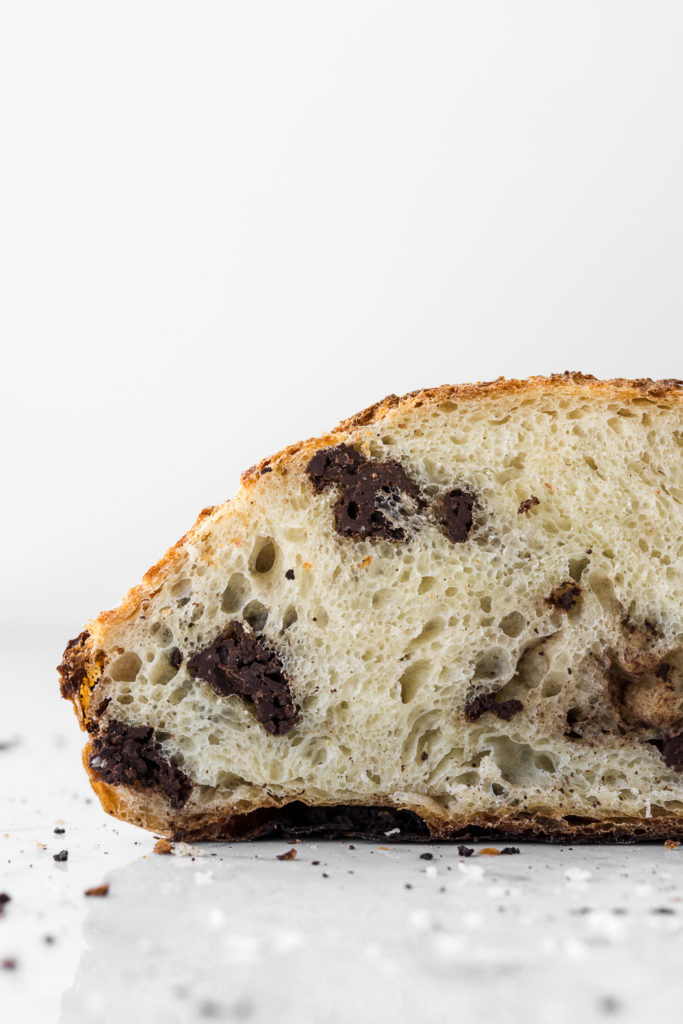
other great yeast bread recipes!
A fun variation on this recipe: caramelized white chocolate cherry bread
My favorite wheat bread: fig and anise wheat bread
A delicious homemade baguette recipe
The best pizza dough of all time!
Printchocolate chunk artisan bread
This is the ultimate artisan yeast bread. The crust is crunchy and shattery, the center is chewy and filled with big melted pools of dark chocolate. It’s a heady combination of textures that’s usually reserved for artisan bakeries and long lines— not the comfort of your own kitchen.
- Prep Time: 16 hours 30 minutes
- Cook Time: 1 hour
- Total Time: 17 hours 30 minutes
- Yield: 1
- Category: Bread
- Cuisine: American
Ingredients
biga
- 3 cups + 2 tbsp (400 g) all-purpose flour
- 1 cup + 2 tbsp + 2 tsp (272 g) warm water
- ⅛ tsp (0.5 g) instant dried yeast
final dough
- ¾ cup + 1 ½ tsp (100 g) all- purpose flour
- ¼ cup + 3 tbsp (103 g) warm water
- 2 tsp (11 g) kosher salt
- ¼ tsp (1 g) instant dried yeast
- all of the biga (recipe above)
- 1 cup (170 g) chocolate chunks or chips (see note)
Instructions
biga
- The evening before you want to bake the bread, whisk together flour and yeast in a large bowl. Pour in the water and mix with a large spoon until a shaggy dough forms. Use your hands to knead the dough further until it comes together, 1- 2 minutes.
- Cover with plastic wrap and leave out at room temperature for 12- 14 hours. The biga is ready when it’s tripled in volume, speckled with gas bubbles and has a strong yeasty, fermentation smell.
final dough
- In a large bowl, whisk together flour, salt and yeast. Pour in the water and stir together with a large spoon until just incorporated.
- Add the biga and combine with the dough by using your thumb and forefinger as pincers to squeeze and pinch off big chunks of dough. Pinch through the dough five to six times, rotating the bowl as needed, then fold the dough over itself a few times. If your hands stick to the dough, it’s okay to wet them up to four times over the course of mixing. Repeat the pinching and folding until the dough is fully mixed and begins to stiffen up. Cover the bowl and let rise about 20 minutes, or until it’s relaxed and flattened out, at which point it is ready for the first fold.
- Sprinkle the chocolate chunks over the surface of the dough. To fold the dough and incorporate the chocolate, moisten your hand and reach underneath the dough. Pull about a quarter of the dough up, just until you feel resistance, then fold it over the top of the dough. Rotate the bowl and repeat this folding four to five times, or until the chocolate is covered and the dough has tightened into a ball. Take the entire ball of dough and invert it in the bowl, so the seams are now face down and the top is smooth. Cover the bowl and let rise another 20 minutes, or until the dough has relaxed and flattened out.
- Repeat the folding two more times, allowing the dough to rest at least 20 minutes in between. After the third fold, let the dough rise until triple its original volume, about 2 ½ to 3 hours after initial mixing. Now it’s ready to be shaped and proofed.
- Put a rack in the middle of the oven, place your 4-quart Dutch oven on the rack with its lid on, then preheat the oven to 475°F (the Dutch oven needs at least 45 minutes to fully heat up).
- Dust a proofing basket with flour and set aside. Lightly flour a work surface and your hands, then gently loosen the dough around the edges of the bowl, being careful not to tear the gluten strands. Sprinkle flour along the edges and bottom of the dough, as needed, to keep it from sticking and gently ease the dough onto your work surface.
- To shape the dough, keep your hands on the bottom, floured surface of the dough to keep them from sticking. Then, stretch a quarter of the dough up just until you feel resistance and fold it across the top. Repeat this folding over until the dough is in a ball shape and the inside is fully enclosed. Flip the dough over so the seam is on the work surface and move it to a spot with no flour.
- As you face the dough, place your hands around the back side of the ball and gently drag it 6 to 8 inches towards you. The dough will grip the un-floured surface and the movement will tighten the ball. Give the loaf a quarter turn and repeating the tightening two to three times, or until the ball has enough tension to hold its shape. Place the shaped loaf in the proofing basket, seam side down and lightly flour the top. Cover the dough and proof for about 1 hour, or until it passes the finger dent test (when an indentation in the dough slowly and incompletely springs back).
- Invert the proofed loaf onto a lightly floured surface, so it is now seam side up. Very carefully, remove the hot Dutch oven from the oven, remove the lid, and place the loaf in the Dutch oven seam side up (you don’t need to score the bread, these seams will naturally open up as the loaf bakes).
- Put the lid on the Dutch oven and return to the oven to bake for 30 minutes. Remove the lid and bake uncovered for 20 to 30 minutes, or until the bread is a rich brown color all over. Take the Dutch oven out of the oven and carefully tip the bread out onto a work surface. Let it cool on a rack for at least 20 minutes, then slice and enjoy.
Notes
makes 1 loaf | recipe adapted from Flour Water Salt Yeast by Ken Forkish
Nutrition
- Serving Size: ⅛ of loaf
- Calories: 140
- Sugar: 11g
- Sodium: 617mg
- Fat: 7.5g
- Saturated Fat: 4g
- Unsaturated Fat: 2.8g
- Trans Fat: 0g
- Carbohydrates: 16g
- Fiber: 0.9g
- Protein: 2.2g
- Cholesterol: 4.8mg
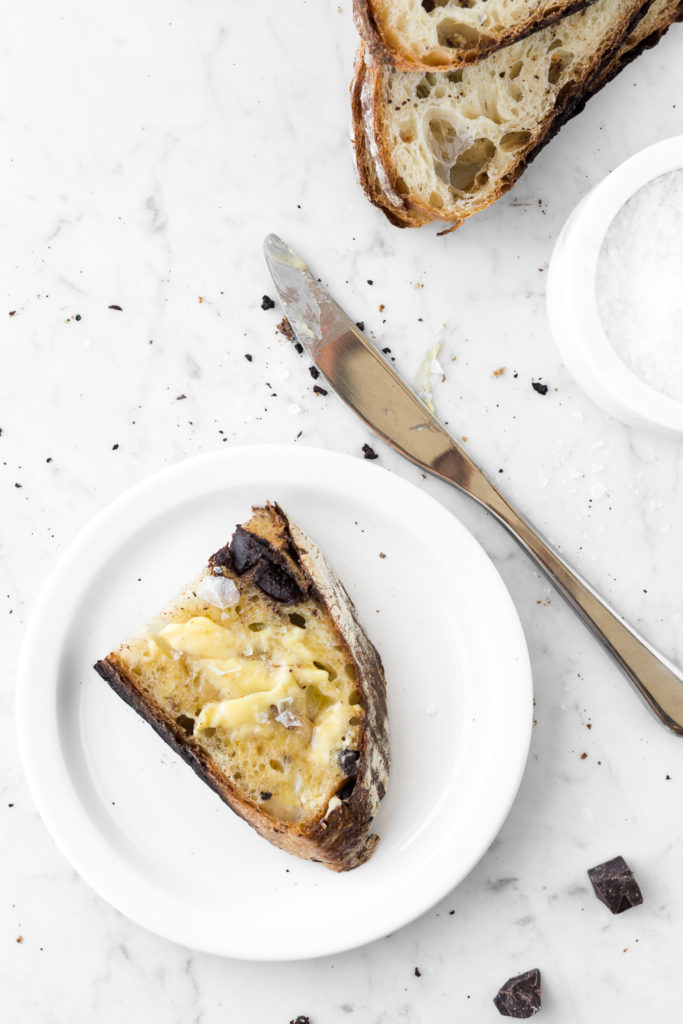
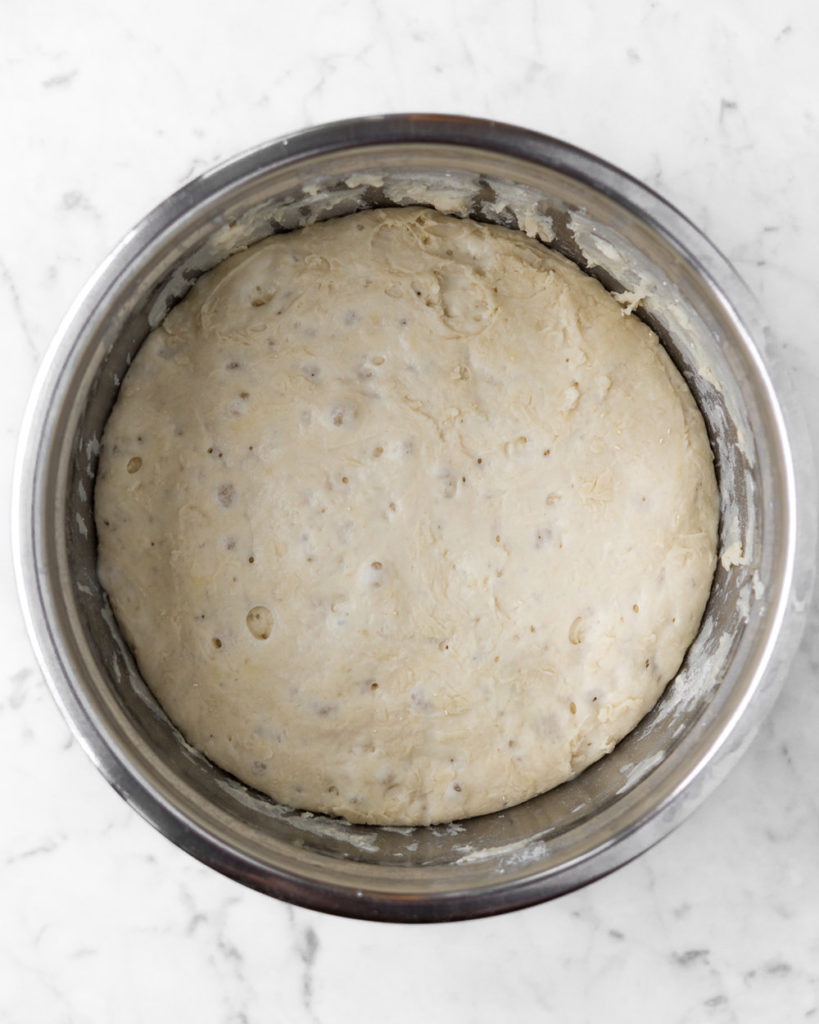
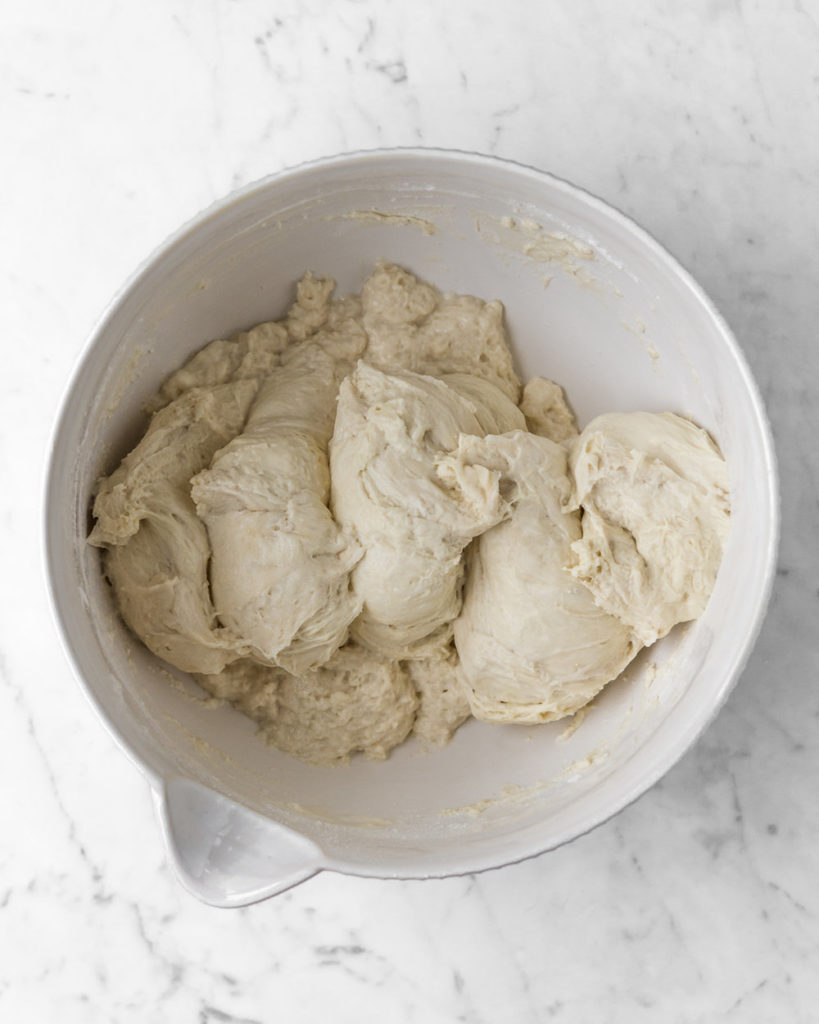
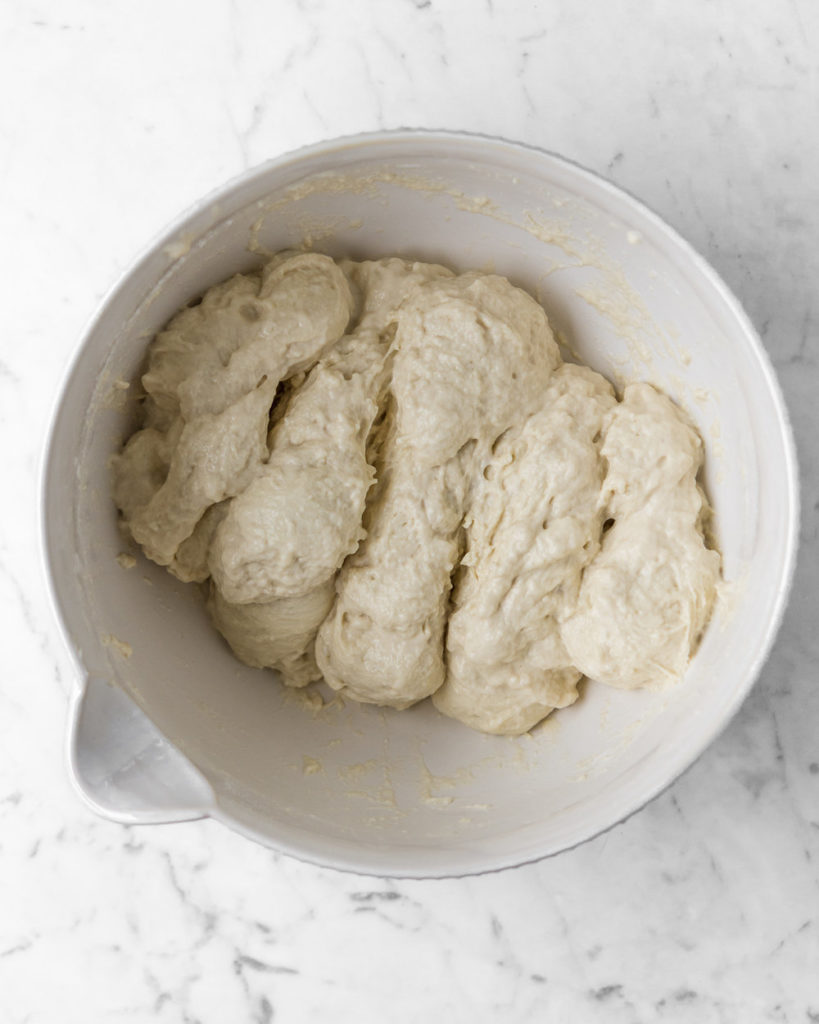
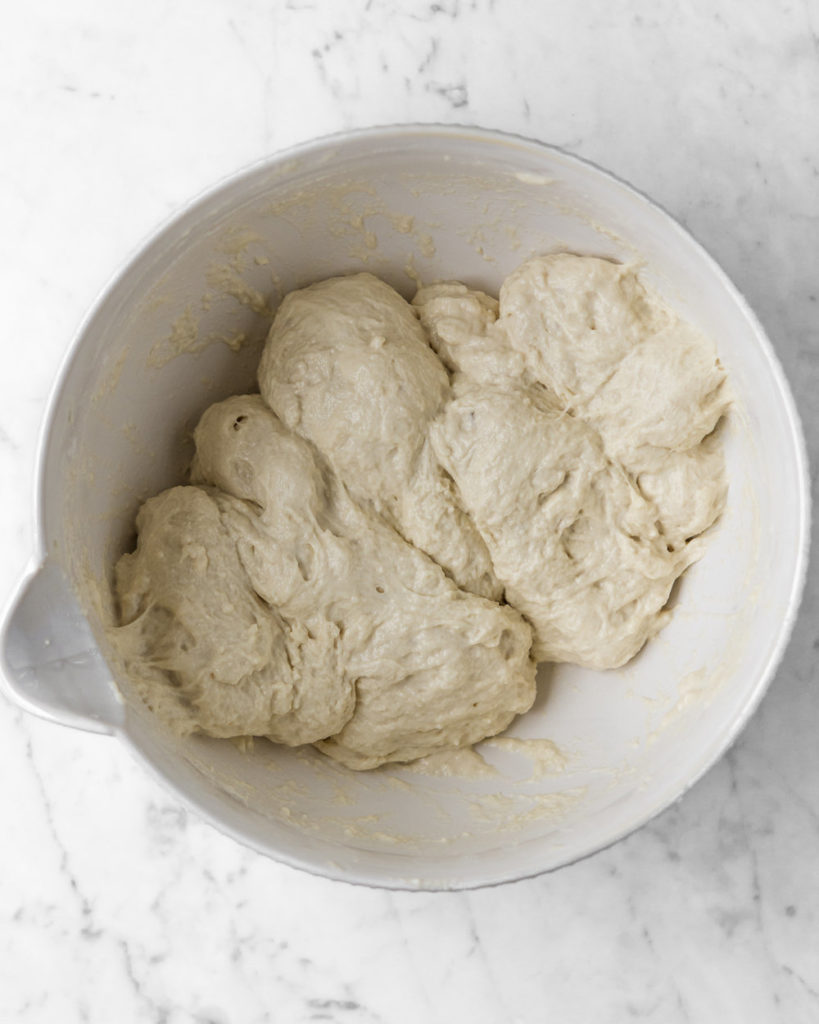
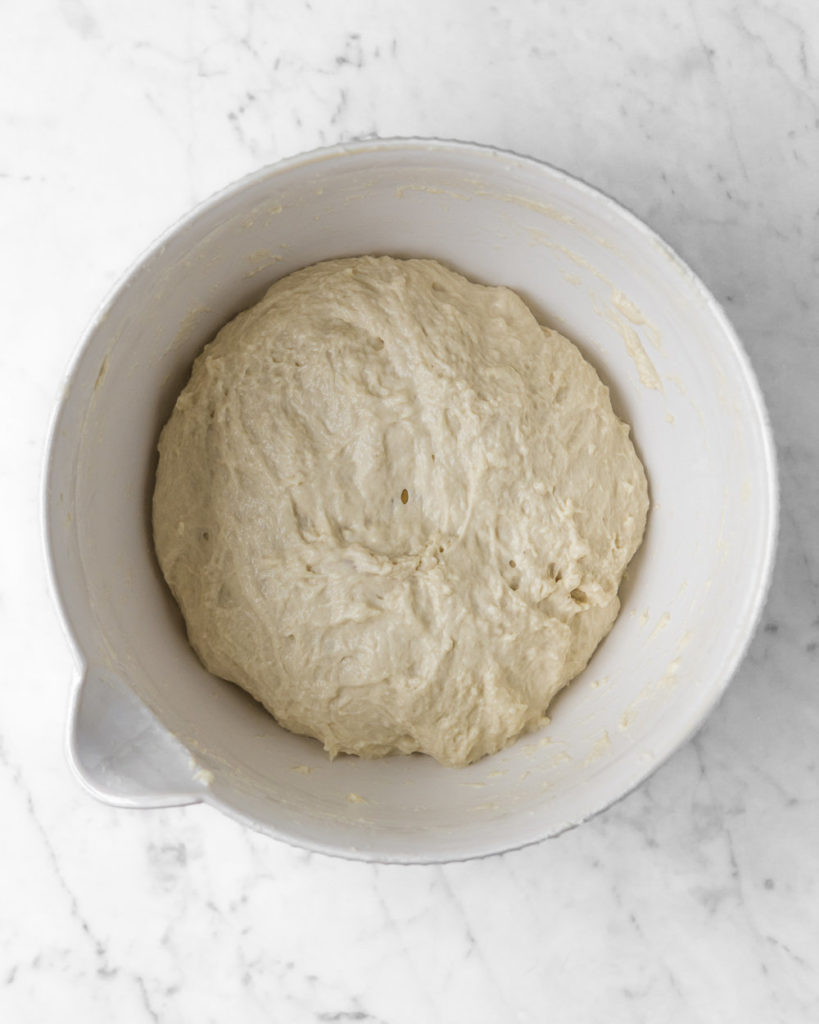
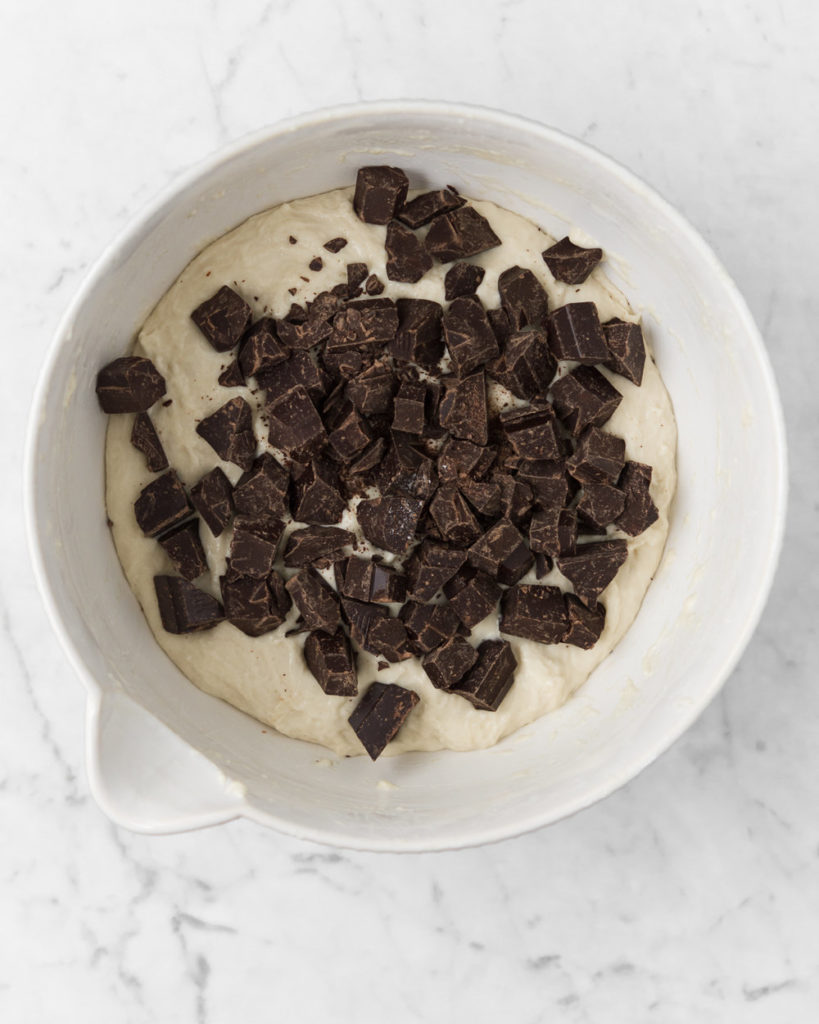
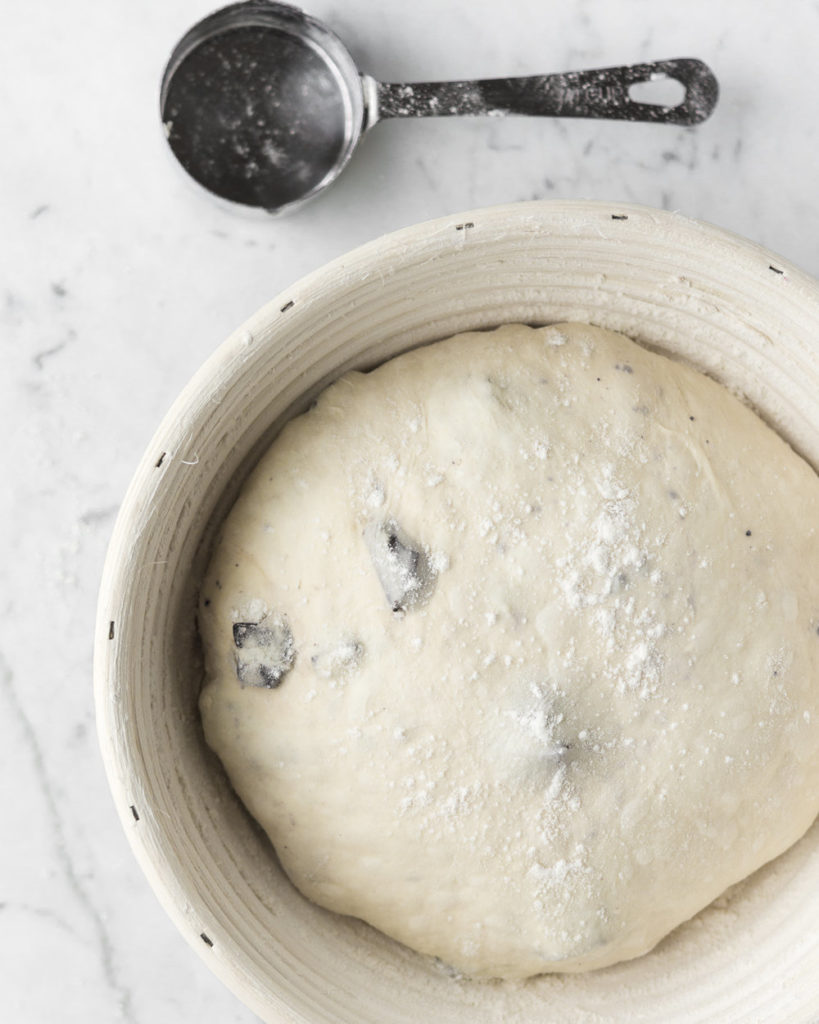
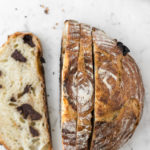
Calyx says
Can I replace the biga with a sourdough starter?
Indi Hampton says
Hi! I haven’t tried it, but it shouldn’t be a problem.
You can substitute your starter for the biga in a 1:1 ratio as long as it matches the hydration of the biga, which is 68% here.
I would just take a portion of your unfed starter, grow it up to be 68% hydration, then weigh out 672g of it when ripe and combine it with the dough in step 2 of “final dough” section. I'm thinking of trying this tomorrow-- I'll report back if I do!
If you’re confused or need help with the math, here are two good forum threads to help you out!
thefreshloaf.com/node/49633/substituting-starter-biga
http://www.thefreshloaf.com/node/59624/starter-percentage
Katherine Calderon says
I'm also super interested in a sourdough starter version of this. I was wondering if you attempted it!
Indi Hampton says
Shoot, I just moved and had to say goodbye to my starter. When I make up a new one, I will definitely test it out and report back!
G. says
I tried this bread today and it's really good! 🙂 However, it is quite long to make but it's worth it! Next time, I will put just a little less salt. Also, once I removed the lid of the dutch oven, it took me under 10 minutes to get a good color, so watch it carefully because I think it would have burn if I had let it in the oven for another 20-30 minutes. Thanks for the recipe!!
Indi Hampton says
I'm so happy to hear it came out great! it's a labor of love for sure-- but so worth it!
Joana Maia says
Hi! I loved this bread! It was my favorite recipe until now! Great texture and crust!
I have a question tough. I bought a windmilled bread flour that is a little darker and a bit more whole meal.
Would it work the same way? should i use more or less flour? Or it's best to use AP flour?
Thank you!!
Indi Hampton says
Hi Joana! I haven't tried this bread with any flour type other than all-purpose, so I don't really know. The texture for sure will change if you use a whole grain flour-- it will be more dense and the crumb won't be as open. My gut says you'll need a little less flour than the original recipe, but I can't say for sure. If I were you, I'd just run a few tests with your new flour! Try the recipe as written, with your flour in place of the all-purpose, and see how it goes. Then, if necessary, tweak the quantities a little bit and see which works best. You can even try substituting 1/3 or 1/2 of the all-purpose with your new flour, which might be the best option (more flavor and complexity from the whole grain, but you retain the lightness of all-purpose). Sorry I can't offer more help!
Joana Maia says
Thank you!! So helpful! I'll try substituing partially with this new flour! Cant wait!
Wish you the best Indi!
Kerry says
I would love to know how your Sourdough version turned out and how you did it! Our family has digestion issues and requires the Sourdough for health reasons.. Thank you!
Indi Hampton says
Thank you!! Ahh I can't remember how I did the sourdough version-- it was a while back, and I just don't have enough experience working with starters to advise you here. If I get back into sourdough, this recipe will be my first stop!
Kim says
It says "see note" about the chocolate, but I couldn't find your comments? Looking for advice on which chocolate. Thanks so much! Can't wait to try!
Indi Hampton says
Of course! Sorry about that-- I should have said see blog post! I love Trader Joe’s 72% Cacao Dark Chocolate Pound Plus bar, and I chop it into big, ½ inch chunks for this bread. If you prefer chips, my favorite are Ghirardelli bittersweet chips. I can't wait to hear how it goes!
Julie Sexton says
This was a lot of babysitting but it was sooo good. How do I get it so that the chocolate chunks are distributed through the bread? I found that they were clumped. Should I dust them with flour before adding to the dough?